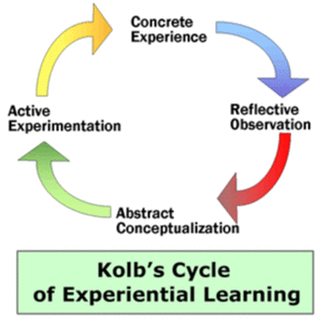Enhancing Training Effectiveness and Evaluation of Experiential Learning
|
Experiential learning programs are highly effective for training employees and enhancing their skills leading to improved performance and increased job satisfaction.
Experiential Learning is a process of education through direct experience, followed by reflection on that experience. Experiential learning is part of the larger category of active learning, as it involves participants in the process of their own learning through involving all the senses and feelings. Experiential learning is also a fad word almost used by everyone where activities are used. Experiential learning has less to do with doing activities and more to do with creating personal meaning through reflection on the activity. This Article lists down some best practices for raising the effectiveness of experiential learning programs. Start with the End in MindExperiential learning programs are designed around the application of the desired skills during the training and post the training through active learning Training effectiveness can be measured when one keeps in mind both the start and the end. This involves pre-assessment and post-assessment
Both pre-training and post-training assessments are critical skills for measuring the success of any training interventions. The pre-training assessment starts with identifying the competency gap, defining learning objectives, desired outcomes, designing and customizing the program specific to learning needs and outcomes. post--training assessment involves measuring the learning retention, transference and application of the learning in terms of behavioral competence at the workplace. Evaluation of Experiential Learning ProgramsEvaluation of experiential learning programs is essential to assess their effectiveness and identify areas for improvement. Here are some steps to evaluate experiential learning programs:
By following these steps, you can evaluate the effectiveness of experiential learning programs and make improvements to ensure that they meet the objectives and achieve the desired outcomes. Evaluation is an ongoing process that should be conducted regularly to ensure that the program remains practical and relevant to the needs of the participants. Pre Training and Post Training AssessmentPre Training Assessment
The pre-training phase involves the following Training needs Identification to determine competency gaps is done through
Post Training Assessment The post-training follow up includes measurement of learning effectiveness using level 1-2-3 of Kirkpatrick Training Evaluation Model. Post Training assessment includes
Pre and Post Training SupportExperiential learning programs are designed around the application of the desired skills during the training and post the training with active learning simulations. This requires pre and post training support for the training to be effective.
The pre-training support phase involves the following Co-Designing of the Training Programme This phase involves discussions around the design of the program with all the stakeholders engaged like team leaders, project heads, business owners, and L&D Teams. This process is not a review phase and is active involvement and participation of the stakeholders, which sets the learning objectives in line with the expected desired learning outcomes at the workplace. Pre Training Assignments The pre-training assignments will involve prework for the participant and can include
Pre Training Support Preparation. This includes preparation and information for the participants a day ahead of the program.
Post Training followup During Post Training Support participants receive weekly follow-ups in microlearning format and a 3-hour in-person session with the facilitator to help them keep the motivation and continue to take action and form behaviors back at work. The post-training support includes follow up on the
Guidelines to enhance effectivenss of experiential learnings programHere are some tips on how to improve the effectiveness of such programs:
Set Clear Objectives: Clearly define the objectives and expected outcomes of the program. This will help participants focus on what they need to learn and how they can apply it in their jobs. Tailor the Program to the Learners: Design the program based on the learners' needs and skills. Consider their knowledge level, job roles, and learning styles to create an engaging and relevant program. Provide Opportunities for Reflection: Encourage participants to reflect on their experiences and what they have learned. This will help them internalize the knowledge and apply it in their jobs. Offer Constructive Feedback: Provide feedback on participants' performance during the program. This will help them identify areas for improvement and apply what they have learned more effectively Use Real-Life Scenarios: Use real-life scenarios that are relevant to the learners' jobs. This will help them apply what they have learned in a practical setting. Use Engaging Activities: Use activities that are engaging and relevant to the learners. This will help them stay focused and interested in the program. Measure the Results: Measure the results of the program and evaluate its effectiveness. This will help you identify areas for improvement and make changes to future programs. Creating Overall Learner SatisfactionThe program's design should balance physical, emotional, intellectual, and social learning aspects that create a learning environment container in which there is engagement, belonging, inclusion, and immersive learning.
Provide immediate Feedback through behavior observation and process the experience to help them understand and internalize the learning by reflecting on their own experience, leading to a change in behavior that can be applied at the workplace. In my experience, having a listening and an open approach from the stage of Identifying training needs to program design and delivery helps to understand client's requirements. The stakeholders can also fully understand if the proposed training will be well-suited and worth the investment. Involving the stakeholders in the Program design customization and delivery will create buy-in and engagement from the start. Focusing on delivering the program for the desired outcomes and taking Feedback during the program, creating action plans, and sharing a post-training feedback and follow-up plan with the client will result in satisfaction and recurring business. Learn more on Experiential Learning Methods |
Contact Us |


